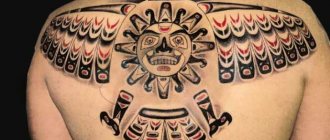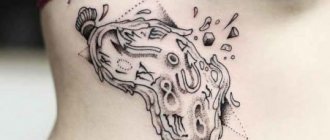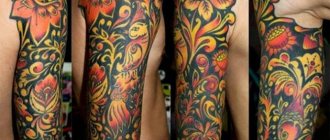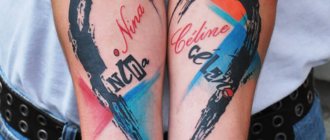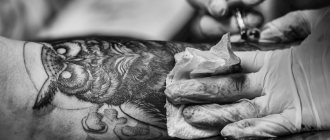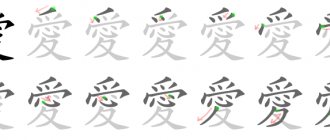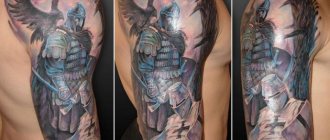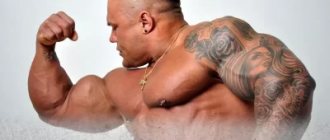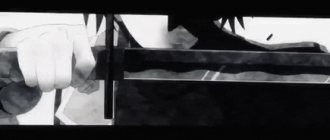Japanese style tattoos are very bright and large. These tattoos make only those who are not afraid to attract attention. After all, such tattoos will always cause a storm of emotions, both positive and negative.
The Japanese style of tattoos is considered one of the most ancient. Its history goes back to the first Buddhists, who painted on his body prayers and symbols.
Features of the Japanese style tattoos
There are several main features of tattoos:
- They are always large in size. Often these tattoos are painted all over the body.
- Interesting application, thanks to which you get an unusual effect when you move. It looks as if the picture comes to life and starts to move.
- The use of a large number of shades. The main ones are red and black, which is found in all Japanese tattoos.
- Clarity in outlines, thanks to which all the details, even the smallest, are not lost among the vast array of pictures.
- The parts of the body that are directly visible (hands, feet, etc.) are never covered. These are hidden tattoos, which are applied to the covered parts of a person's body.
- The deep meaning of every detail. Such tattoos are carefully thought out.
The color palette is very diverse. The main shades are black and red, but there are other bright colors that are used in these tattoos.
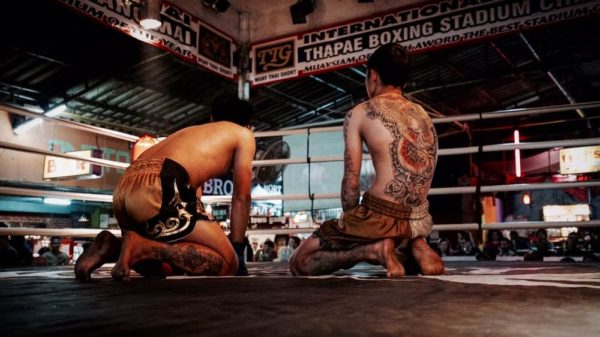
Symbolism in the Eastern style
In this style, the meaning is very important. In Japanese tattoos nothing is depicted if it has no meaning. The meaning also depends on the location of the tattoo.
On the neck, the tattoo speaks of mystery. On the arms, Japanese tattoos represent determination and courage. On the back - protection from various dangers. On the leg - the desire to achieve great success in life. On the chest - the challenge that a person throws to the surrounding world.
The most popular images in the Japanese style:
- Hieroglyphics are applied in order to immortalize some meaning in words on one's body.
- Snakes and dragons are depicted to show strength and determination, courage and boldness.
- Tattoos in the form of a carp are applied to attract financial prosperity.
- Child Kintaro represents intelligence and courage.
- Flowers (sakura, chrysanthemum, etc.) represent courage for men and beauty for women.
- Images of masks are very popular in the oriental tattoo style. They are pierced to show strength, courage, bravery.
Oriental
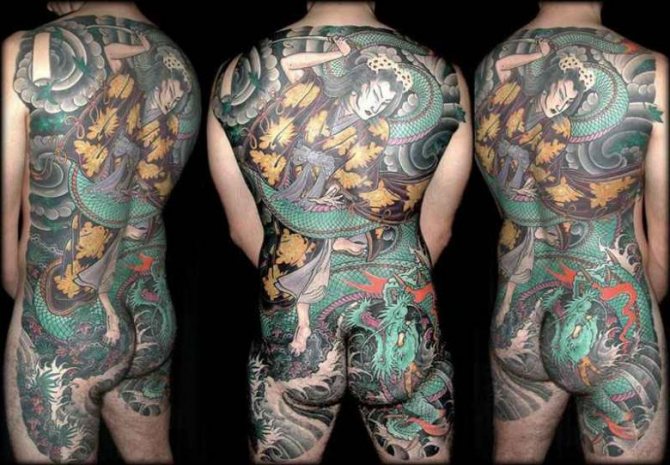

Oriental tattoo style (Japanese tattoo)


Japanese tattoo is an ancient art. The earliest evidence of tattooing in Japan is considered to be the Dogu clay figurines found in excavations made during the late Jemon period (14,000-400 BC) of prehistoric Japan. Most have marks on their faces, chests and shoulders which suggest tattoos. It is generally believed that tattooing signified social rank as well as serving to repel evil spirits and wild animals.


The first written record of a Japanese tattoo dates to the 3rd century AD. Chronicles described how people of noble birth in Japan wore patterns on their faces, tattooing was a privilege of the nobility. Gradually developing and becoming more complex, it evolved from simple designs to true art.
But beginning in the 7th century decorative tattooing fell into official disfavor and was used as a punishment. Certain symbols were used to denote the severity of the crime and even the places where they were committed. People with such marks were ostracized by their families and excluded from public life. This is why such punishment was very hard for the Japanese.
Ornamental tattoo style. Examples of works, masters of the style, technique, history
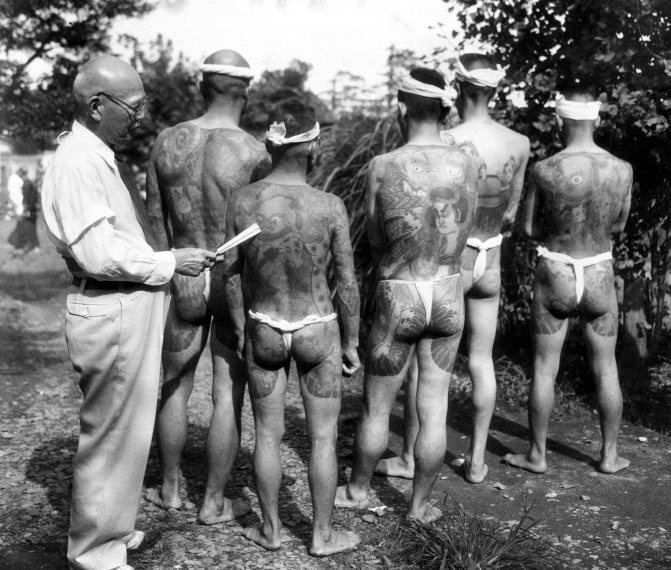

This continued until the late 17th century, when penal tattooing was largely replaced by other forms of punishment. One reason is that decorative tattoos became popular and criminals covered their fine drawings with large decorative ones. Hence the historical origins of the tattoo association and organized crime in Japan. Tattoos become the hallmark of the Yakuza (Japanese Mafia). Because of this association, tattooing was outlawed. But the ban did not prevent the latter from growing in popularity, especially among the lower social classes: laborers, artisans, firemen, geisha. Prohibitions did not apply to foreigners, and in the 19th century the best masters opened their studios, whose unique art attracted respectable clients from abroad, up to monarchs such as the Danish King Frederick IX, the English Edward VII, Nicholas II.
The Oriental style includes three main areas: iredzumi, gaman, and kakushi-boro.
Iredzumi is associated with the underworld, as the original purpose of the intricate patterns was to hide the shameful signs of punishment underneath. And later such painting became an indispensable attribute of the Yakuza. The most striking and popular subject of this style is the Japanese dragon, a symbol of unlimited power, authority and wisdom. The image of the dragon, its size and color could tell about the belonging of its owner to a particular group and its place in the hierarchy.
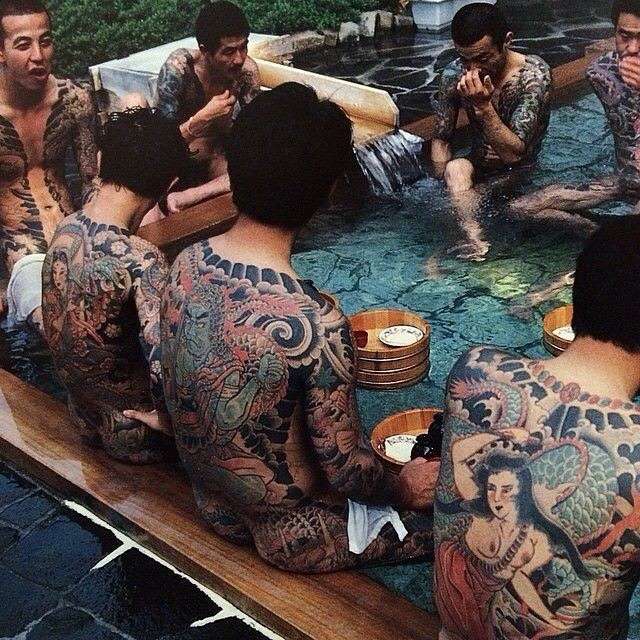

Gaman was considered a privileged style, he adorned the noble men, soldiers, distinguished in battles and in service to society, emphasizing their strength and courage, demonstrating high human qualities.
The third trend Kakushi-Boro was the most unusual and interesting. These were women's secret drawings. Special incisions in the body were rubbed with rice powder and the drawings appeared only at moments of great excitement or when taking a bath. So that only those closest to her could see them.
Style tattoo Trash Polka (Trash Polka). Examples of works, artists style, technique, history
Traditional Japanese tattoo consists of one main design that covers the back of the body and extends to the arms, legs and chest, in shape resembling a kimono. The drawing is interrupted at the neck, ankles and wrists so that the tattoo can be concealed under clothing. The design requires a considerable investment of time, money and emotional energy. The work is done with the traditional tebori tool, which is a needle attached to a long bamboo stick. It is believed that it is the traditional tool that allows you to create a unique pattern. The creation of a full pattern sometimes takes more than one year. Not everyone can endure the rather painful procedure of tattooing for a long time, required to create complex multi-colored compositions. But the ancient technique is gradually receding into history. Modern craftsmen are increasingly using electric needles in their work, replacing them with tebori.


Creating their works, masters were inspired by spiritual legends and philosophical parables. Therefore, each story has a certain meaning, full of encrypted symbols. Dragons as a symbol of wisdom and self-confidence, carp symbolizing courage, tiger as a symbol of fearlessness, snake as a symbol of protection against trouble and disease, peony, the flower of wealth and prosperity, sakura flowers as a symbol of a warrior's short life and transient youth, hieroglyphs, samurai and geisha. Here is a small list of the rich palette of patterns used by masters of Japanese tattooing. Not only individual symbols are significant, but also their combination and location on the body, so Japanese tattoos are characterized by asymmetry. The drawings are usually bright and colorful, with the main motif clearly highlighted and a decorative outline. The main pattern is often framed in small details with observance of a single composition, in which such body parts as nipples or navel are also included as elements. It is important to understand the elements of traditional design, their combinations and meanings, which is the main difficulty of Japanese tattooing. Mastering this technique requires serious and in-depth study of the subject.
It is believed that there are no more than 100 masters left in Japan who have mastered the traditional tattoo style. Despite its rich history, in modern Japan having a tattoo is generally perceived negatively, especially by the older generation. This is due to the fact that the tattoo is considered a symbol of belonging to the underworld, the Yakuza. So having a tattoo, for example, can have a negative impact on one's professional career. Visitors with tattoos on their bodies are not allowed into places for public bathing more than half of Japanese hotels, and this concerns not only locals, but also foreign tourists.
The best masters of style Oriental
- Melow Perez
Spainblack blackwork ornamental oriental / oriental
- Pitta
South Korea
Colorful traditional oriental / oriental author style
- Diao Zuo
Taiwan
color black oriental / oriental japanese traditional
- Ian Det
Italy
Colorful Japanese Oriental / Oriental
Men's subjects for Japanese tattoos
Men choose the image of a carp to prove their strength and masculinity. Also popular among guys are tattoos with hieroglyphs, so they are trying to capture on themselves some mysterious and very deep meaning.
Often depict a variety of masks, which not only look very interesting and unusual, but also carry deep meaning, sometimes coming from the legends and myths of the Japanese people. A popular subject is the tiger, which is always a symbol of male courage.
Popular female subjects
The most popular image among the fair sex is flowers. In the tattoo depict most often a lotus, a peony, a sakura. Such floral compositions decorate the whole body or a large part of it. Flowers are a symbol of beauty and eternal youth.
Masks are very popular among women. They depict various legendary masks, which help to give confidence and attract good luck.
Tattoos in the Japanese style carry the deepest meaning, attract attention, and are a striking decoration on the body of its bearer. However, you need to approach the application of tattoos in this style very carefully, you need to think through every detail in order to attract exactly what you need.
Japanese style (Oriental)
The Japanese style in tattooing is one of the oldest. About the application of drawings on the body in this country knew in the 5th century BC. However it is worth noting that initially tattoos were quite simple, and only some time later the drawings were so picturesque and varied that tattooing and was really elevated to the rank of art.
Interestingly, tattoos in Japan were worn by artisans and geishas, rich dice players and members of religious society. In general, by the 19th century, drawings had become so different that the eyes were scattered by their beauty. The main styles at the time were considered to be kakushi-boro, gaman, and irezzumi. The latter was classic prison culture-all criminals were required to wear tattoos regardless of their desires. Interestingly, the kakushi-boro style was an invisible tattoo applied to a woman's body: a white drawing that appeared only when aroused or after taking an aromatic hot bath.
The art of Japanese tattooing is now widespread around the world. As a rule, each of the subjects carries a certain meaning hidden in the symbols. One of the most popular of them is the dragon in various compositions. The meaning of this image is often correlated with wisdom, strength, confidence in their own strength. In addition, images of fish - carp - are considered a symbol of courage, and tigers - fearlessness. In addition to this, the Japanese style also has a floral trend: sakura flowers, chrysanthemums, peonies.
Japanese style can be guessed by some of the most striking features: tattoos are quite extensive and are performed in a certain form resembling a kimono. In addition, it is the Japanese motifs that can be guessed most often by the intertwining of small plot lines in the general, by creating mini-pictures within the boundaries of the large tattoo. Speaking about this trend in the modern tattoo, it is worth saying that Japanese tattoos are more often asymmetric and in addition abound in special techniques of blurring, tracing contours, marking them with special techniques.
An experienced tattoo master knows that in Japanese style it is not enough to know what the client wants; it is also important to correctly place the sketch on the body. Very often the expressiveness of the entire composition depends on the play of muscles, nothing can replace this. Similarly, body parts such as, say, the navel or nipples stand out: here it is rather predetermined that they participate in the composition as eyes or other expressive moments in the drawing. Japanese style in an incredible way accumulates modern beauty and ancient traditions, pleases the eye and serves as a real decoration of both female and male bodies.
